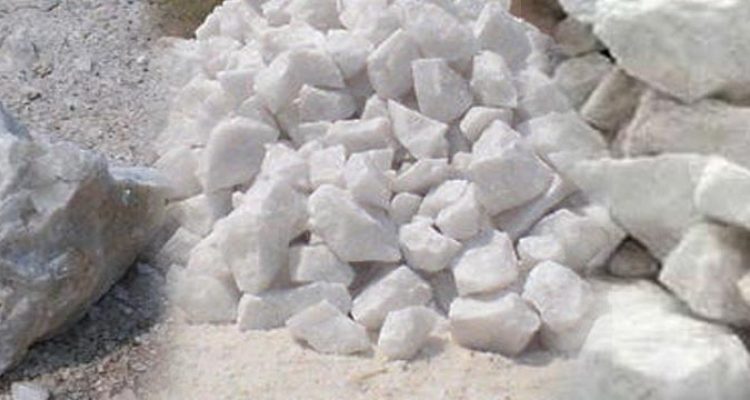QUARTZ
Quartz is hard, chemically inert and has a high melting point, attributable to the strength of the bonds between the atoms. These are prized qualities in applications like foundries and filtration systems. Quartz may be transparent to translucent and has a vitreous luster, hence its use in glassmaking and ceramics. Quartz’s strength, silicon dioxide contribution and non-reactive properties make it an indispensable ingredient in the production of thousands of everyday products. For industrial and manufacturing applications, deposits of Quartz yielding products of at least 95% SiO2 are preferred.
Industrial Applications of
Quartz
- Glassmaking: Quartz sand is the primary component of all types of standard and specialty glass. It provides the essential SiO2 component of glass formulation and its chemical purity is the primary determinant of color, clarity and strength
- MetalCasting: Quartz is an essential part of the ferrous and non-ferrous foundry industry. Metal parts ranging from engine blocks to sink faucets are cast in a sand and clay mold to produce the external shape, and a resin bonded core that creates the desired internal shape
- Metallurgical: Quartz plays a critical role in the production of a wide variety of ferrous and non-ferrous metals. In metal production, Quartz sand operates as a flux to lower the melting point and viscosity of the slags to make them more reactive and efficient. Lump Quartz is used either alone or in conjunction with lime to achieve the desired base/acid ratio required for purification. These base metals can be further refined and modified with other ingredients to achieve specific properties such as high strength, corrosion resistance or electrical conductivity. Ferroalloys are essential to specialty steel production, and industrial sand is used by the steel and foundry industries for de-oxidation and grain refinement.
- Chemical Production: Silicon-based chemicals are the foundation of thousands of everyday applications ranging from food processing to soap and dye production. In this case, SiO2 is reduced to silicon metal by coke in an arc furnace, to produce the Si precursor of other chemical processes. Quartz is the main component in chemicals such as sodium Quartzte, silicon tetrachloride and silicon gels. These chemicals are used in products like household and industrial cleaners, to manufacture fiber optics and to remove impurities from cooking oil and brewed beverages.
- Building Products: Quartz is the primary structural component in a wide variety of building and construction products. Whole grain Quartz is put to use in flooring compounds, mortars, specialty cements, stucco, roofing shingles, skid resistant surfaces and asphalt mixtures to provide packing density and flexural strength without adversely affecting the chemical properties of the binding system
- Paint and Coatings: Paint formulators select micron-sized industrial sands to improve the appearance and durability of architectural and industrial paint and coatings. High purity Quartz contributes critical performance properties such as brightness and reflectance, color consistency, and oil absorption
- Ceramics & Refractories: Ground Quartz is an essential component of the glaze and body formulations of all types of ceramic products, including tableware, sanitary ware and floor and wall tile. In the ceramic body, Quartz is the skeletal structure upon which clays and flux components attach. Quartz products are also used as the primary aggregate in both shape and monolithic type refractories to provide high temperature resistance to acidic attack in industrial furnaces.
- Oil and Gas Recovery: Known commonly as proppant, or “frac sand,” industrial sand is pumped down holes in deep well applications to prop open rock fissures and increase the flow rate of natural gas or oil. In this specialized application round, whole grain deposits are used to maximize permeability and prevent formation cuttings from entering the well bore

